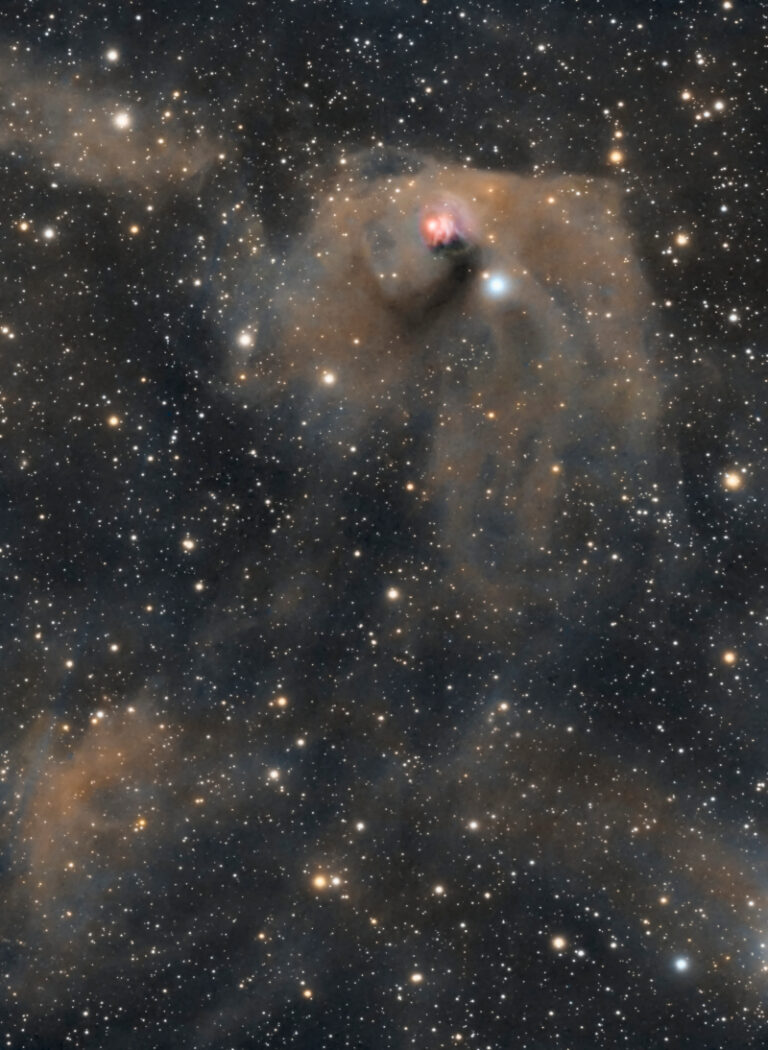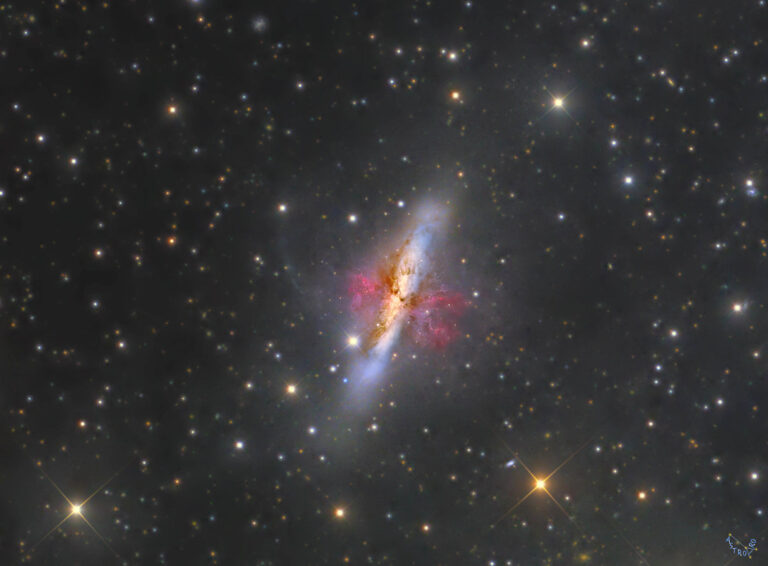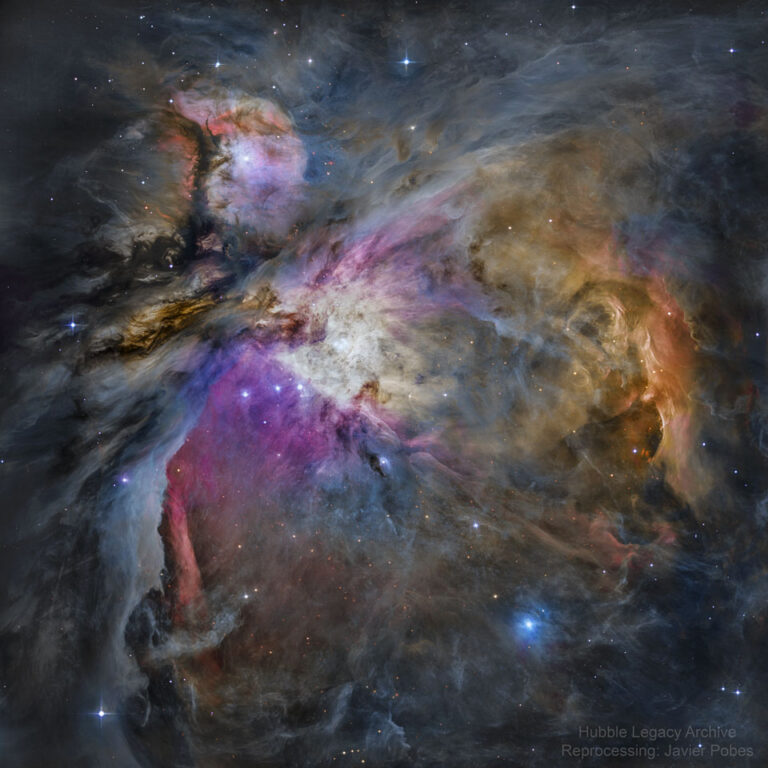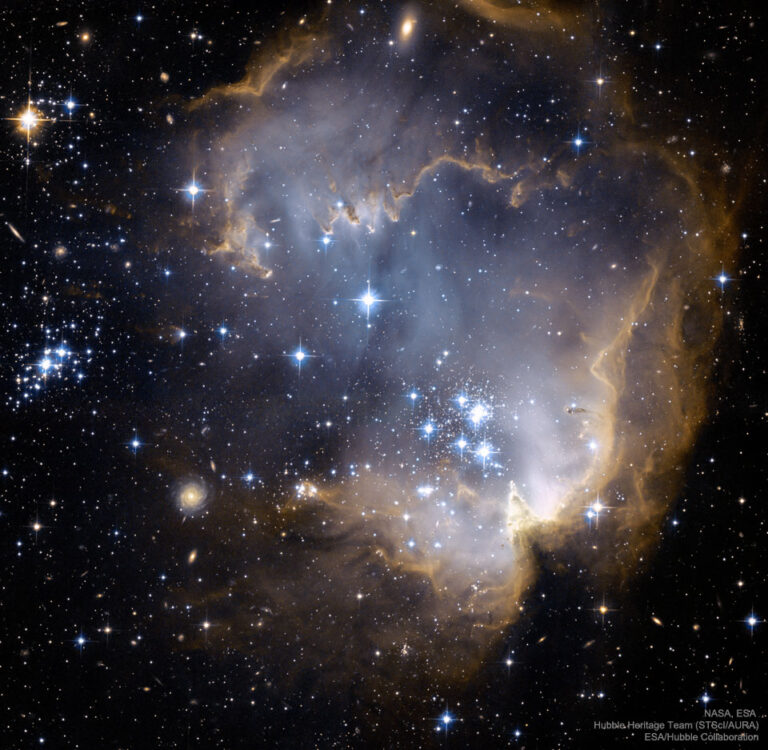金牛T星与欣德变光星云
2022年2月10日 T Tauri and Hind’s Variable Nebula Image Credit & Copyright: Dawn Lowry, Gian Lorenzo Ferretti, Ewa Pasiak and Terry Felty Explanation: The star with an orange tint near top center in this dusty telescopic frame is T Tauri, prototype of the class of T Tauri variable stars. Next to it (right) is a yellow cosmic cloud historically known as Hind’s Variable Nebula (NGC 1555). About 650 light-years away, at the boundary of the local bubble and the Taurus molecular cloud, both star and nebula are seen to vary significantly in brightness but not necessarily at the same time, adding to the mystery of the intriguing region. T Tauri stars are now generally recognized as young (less than a few million years old), sun-like stars…





